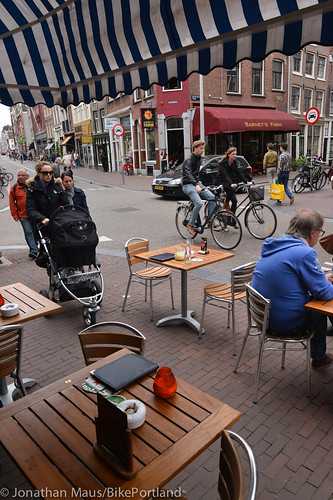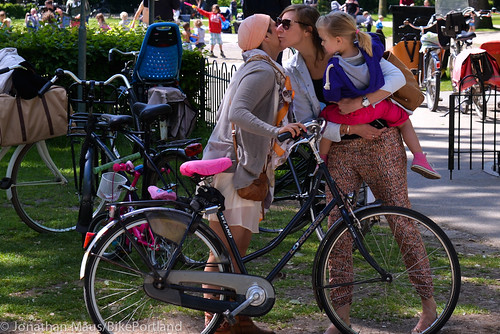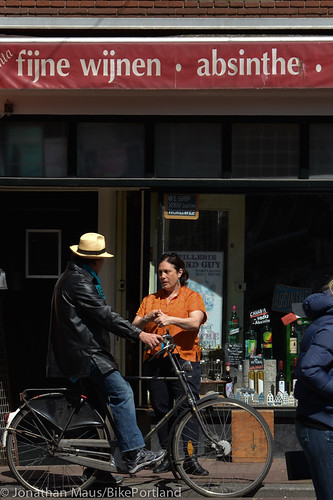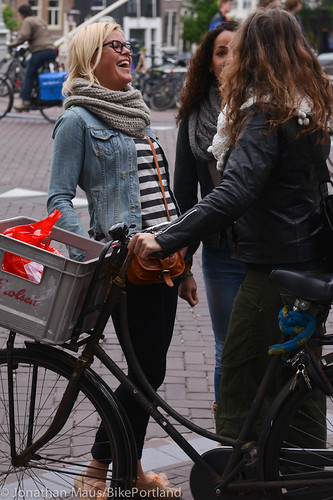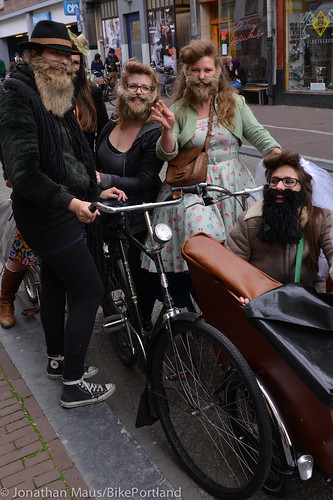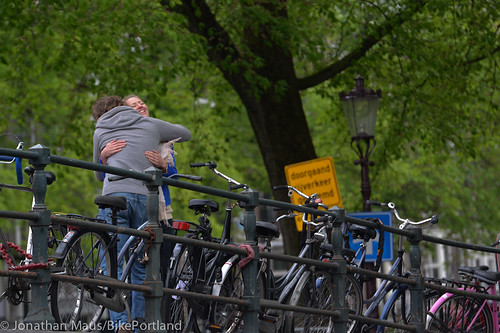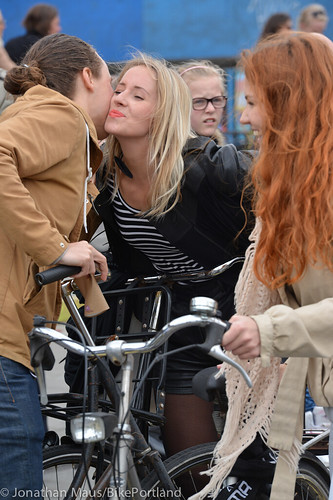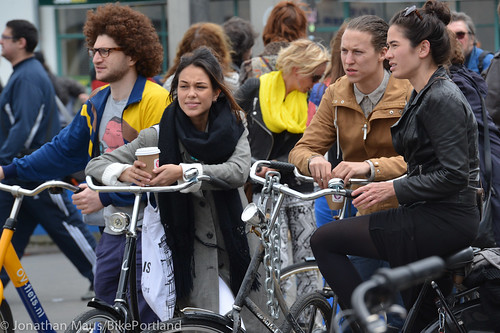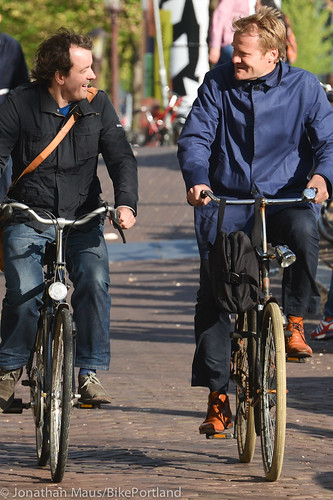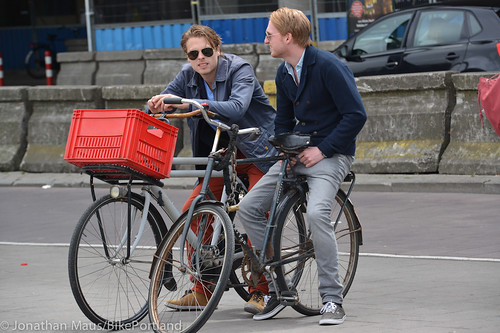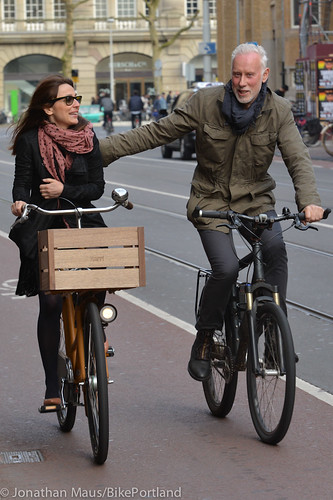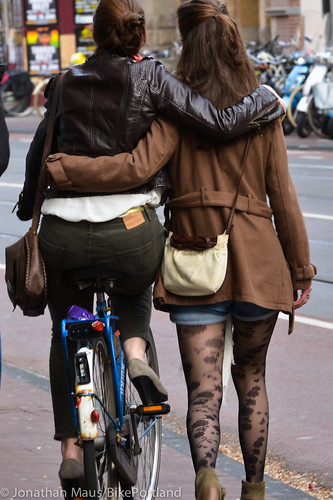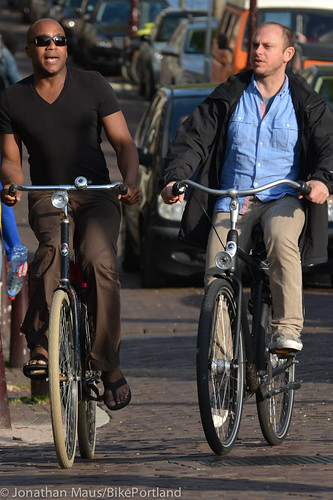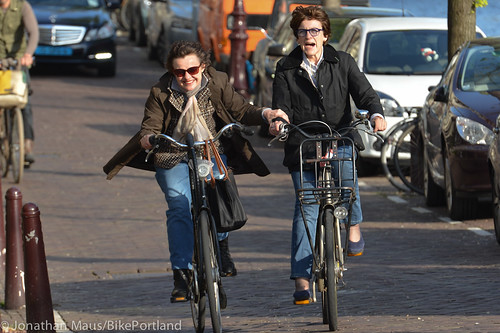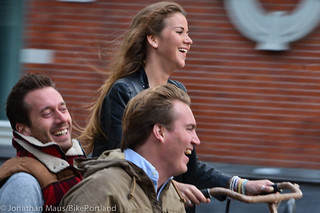
you’re doing something right.
(Photos © J. Maus/BikePortland)
Like I mentioned in my last post, I had a few “free” days in Amsterdam after my time in Copenhagen and before the official study tour began today (more on that later). Since I’ll be back in Amsterdam to do all the wonky stuff later this week, I spent those free days doing what I like best: wandering around and observing people on bikes. I think you learn a lot about a city’s bike culture simply by watching how its residents use their bicycles.
What I saw in Amsterdam was the most sociable (and stylish) cycling imaginable. It was really astounding to see how the bicycle is such a key element in the social fabric.
In great bicycle cities, the quality of the bike network creates a riding environment suited to conversation. In fact, in both Denmark and the Netherlands, bikeways are designed specifically with socializing in mind. In the Netherlands, fostering a healthy “social being” is a core design element. On busy streets, completely segregated cycle tracks are wide enough for side-by-side riding (Copenhagen has some 16-foot wide cycle tracks with “social” lanes (a.k.a. passing lanes)). And on lower volume streets, traffic is so calm it’s easy — and quite nice actually — to chat while you ride.
The maneuverability of bicycles is also a factor. In a good bike city, users of bicycles can take their vehicle nearly everywhere. Unlike a car, with its massive physical footprint and public transport, which runs on fixed routes, it’s easy to stop a bicycle if something catches your eye or pull over and chat with a friend. Social cycling is also possible here because most people have a fully upright riding position. If you look at some of my photos from the belly up, the subjects look like they could be walking.
Another thing that works into the social cycling mix is that people here are extremely skilled at riding. They can have conversations (on the phone or with a friend next to them) while pedaling through a chaotic intersection rife with bumbling tourists, trams, cars, buses, and so on.
These social interactions that cycling makes possible have a profound positive impact on cities. We learned from a Dutch cycling expert today about the concept of “experience as an economic tool.” That is, cities with attractive public space are full of people having experiences and those experiences lead to economic activity. And it’s not just felt by people who are riding. Cities in the Netherlands with high bike mode shares have vibrant sidewalk cafes with tables and chairs facing right onto the street. The main reason it’s so pleasant to sit and talk at places like that is because there are so few cars rumbling by (in Amsterdam, bicycling is the majority mode of travel).
In Portland we have a strong social element to cycling — but it happens mostly at our events and destinations rather than in the bike lanes themselves. We don’t socialize while riding like they do here. Why is that? Are we too concerned with our safety? Are we just not skilled enough to carry on a conversation without getting distracted? Or is it because most people’s bikes in the U.S. require them to be hunched over? What do you think?
Oh, and the fact that everyone in Amsterdam is so stylishly dressed is just icing on the cake. Check out more social and stylish images below…
— See more of my coverage from Europe here.


